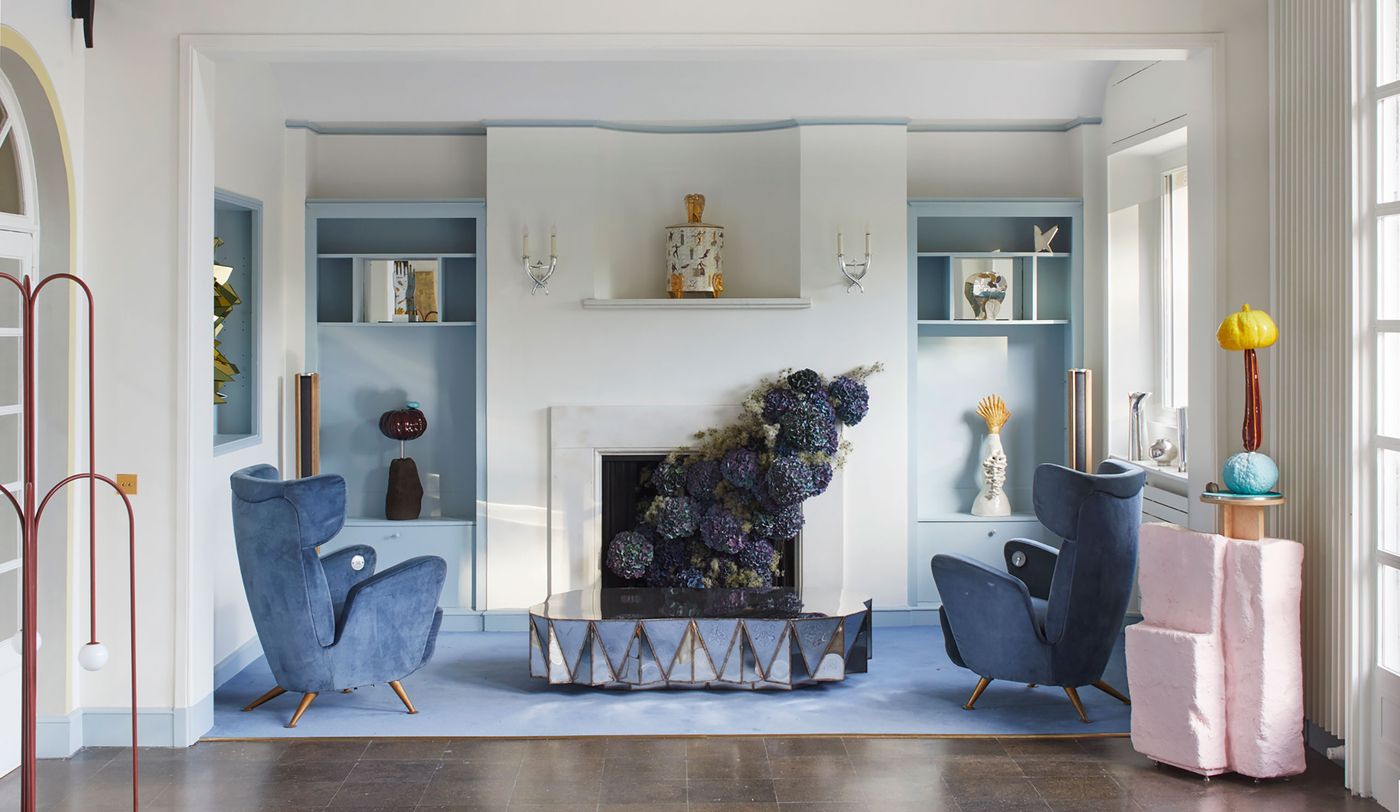
Genius Loci: An Immersive Exhibition of Art & Design Revives the Spirit of Gio Ponti’s L’Ange Volant Villa
Words by Eric David
Location
Garches, France
Genius Loci: An Immersive Exhibition of Art & Design Revives the Spirit of Gio Ponti’s L’Ange Volant Villa
Words by Eric David
Garches, France
Garches, France
Location
Originally found in Roman mythology, the term genius loci has evolved from signifying the protective spirit of a place to indicating a location’s prevailing atmosphere. In the context of architecture and design, the term has also taken on a more layered meaning, referring to the cultural, historical, social and environmental parameters that a project should take into account. It’s therefore not difficult to see why French exhibition curator, journalist and author Marion Vignal picked Genius Loci as the name of a new series of immersive exhibitions that aim to showcase the spirit of the iconic residences they are set in through contemporary art and design. The series’ first edition takes place at L’Ange Volant, a 1920s neo-Palladian villa on the outskirts of Paris designed by Gio Ponti, the most influential Italian architect and designer of the 20th century. Featuring works from over twenty international artists, several of whom were specifically commissioned for the exhibition, alongside historic design pieces by Gio Ponti and his friends, Genius Loci’s inaugural event, which took place earlier in October, not only revitalized Ponti’s century-old residence, but also enabled visitors to experience it as a true Gesamtkunstwerk — in other words, a complete work of art.
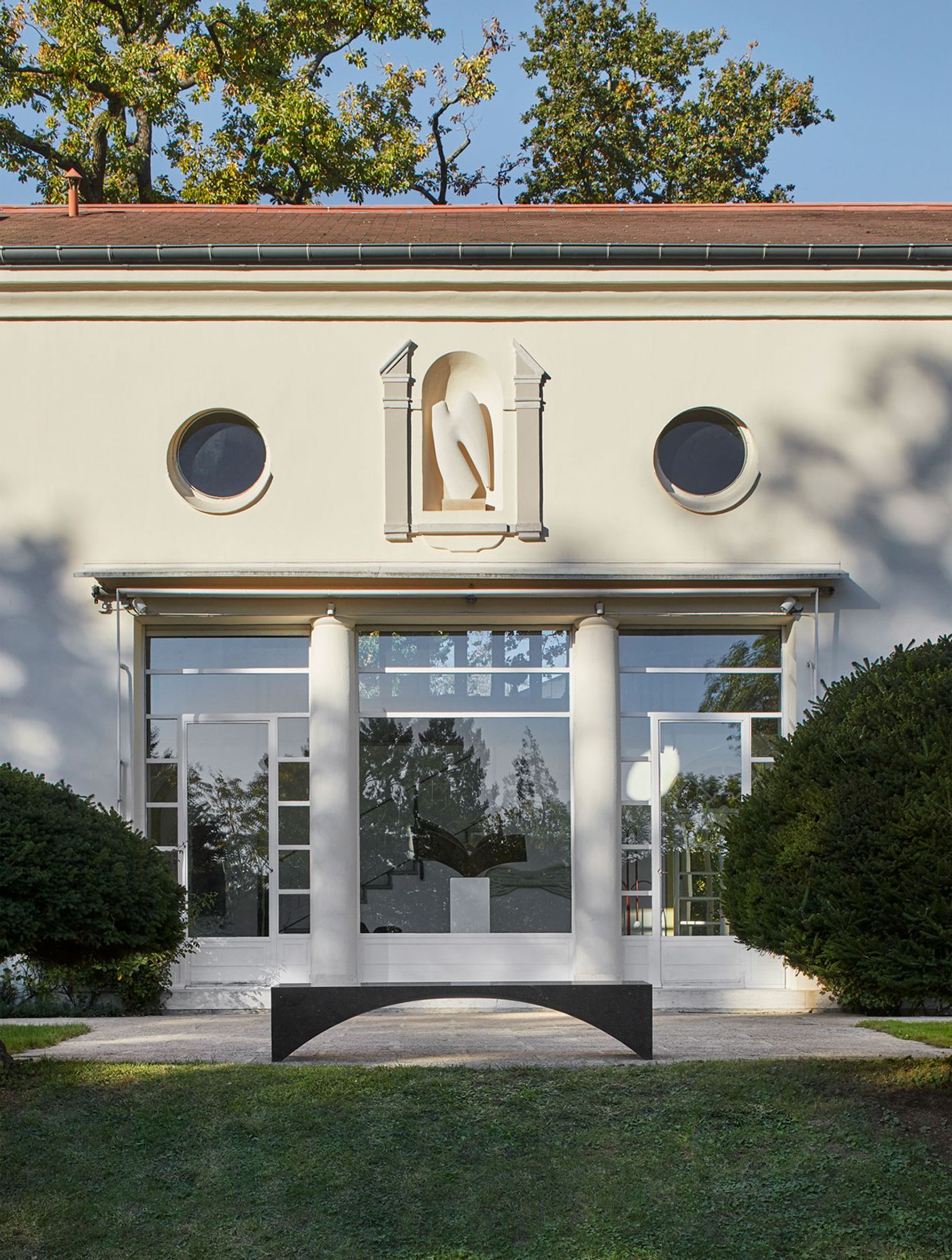
Photography © Jeremie Léon.
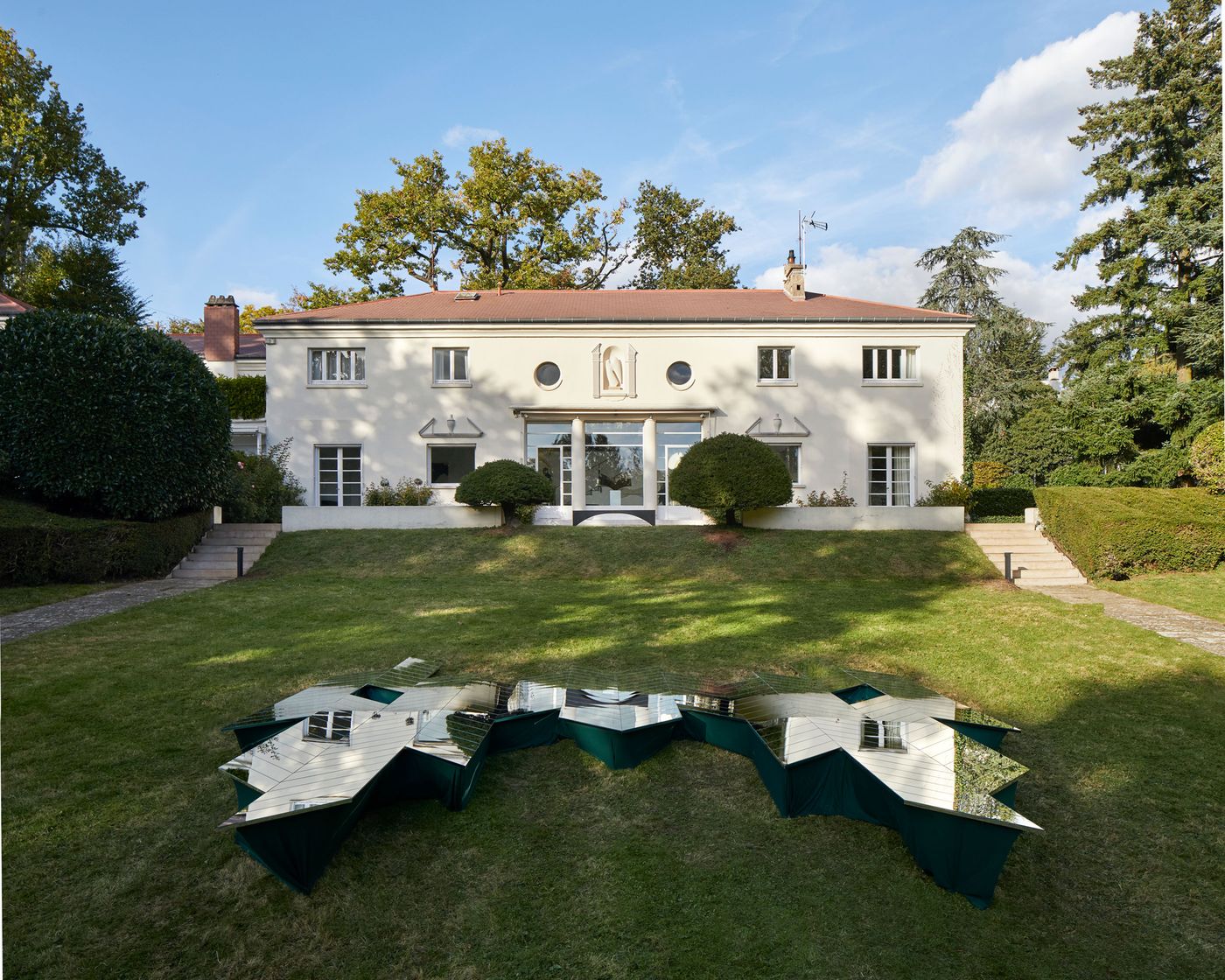
Mathias Kiss, Sans 90 degrés Sky Mirror, 2021, commissioned for Genius Loci at L'Ange Volant. © Diorama.eu. Photography © Jeremie Léon.

Mathias Kiss, Sans 90 degrés Sky Mirror, 2021, commissioned for Genius Loci at L'Ange Volant. © Diorama.eu. Photography © Jeremie Léon.
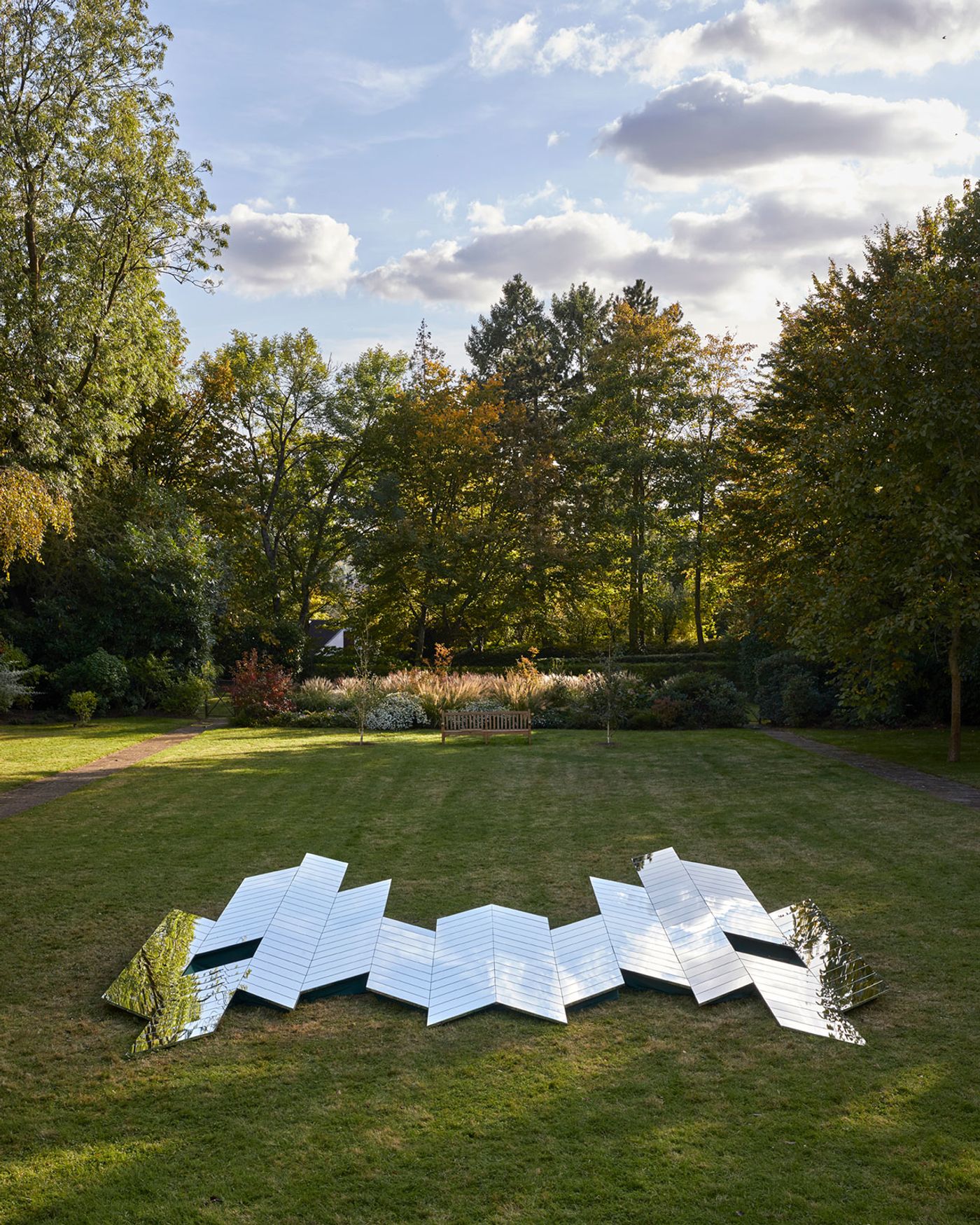
Mathias Kiss, Sans 90 degrés Sky Mirror, 2021, commissioned for Genius Loci at L'Ange Volant. © Diorama.eu. Photography © Jeremie Léon.
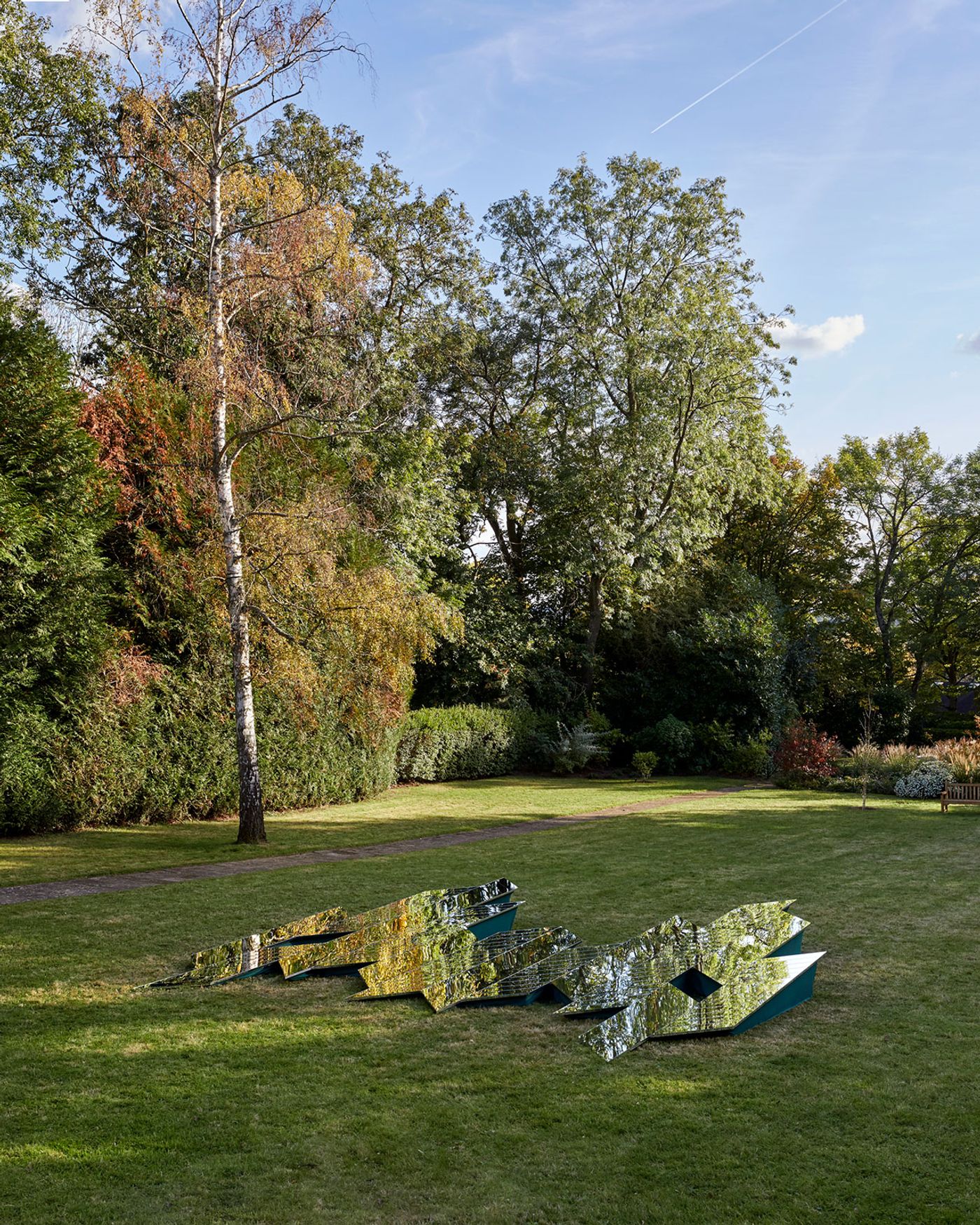
Mathias Kiss, Sans 90 degrés Sky Mirror, 2021, commissioned for Genius Loci at L'Ange Volant. © Diorama.eu. Photography © Jeremie Léon.
Located in Garches, a leafy suburb west of Paris, L’Ange Volant was built between 1925 and 1927 as a weekend retreat for the Bouilhet family, owners of the French silver company Christofle, following Tony Bouilhet’s meeting with Ponti during the 1925 World Fair in Paris – a landmark exhibition that gave rise to the Art Deco style. As Ponti’s first and only architectural project in France, the villa evocatively reflects his multifaceted creative practice. Ponti was a true polymath, a pioneering artist and designer dabbling in furniture, ceramics, textiles and interior decoration, as well as working as an art director, teacher, poet and publisher, most notably for legendary design magazine Domus. It shouldn’t therefore be any surprise that he was responsible for every aspect of the villa’s design, from the internal layout and surrounding landscaping, to the painted ceilings, engraved mirrors and door handles. A love letter to the creative synergies of architecture, design, and art, the project is also an ode to love as it was the catalyst for the meeting and subsequent marriage between Tony Bouilhet and Ponti’s niece Carla Borletti – hence its name which translates as The Flying Angel.
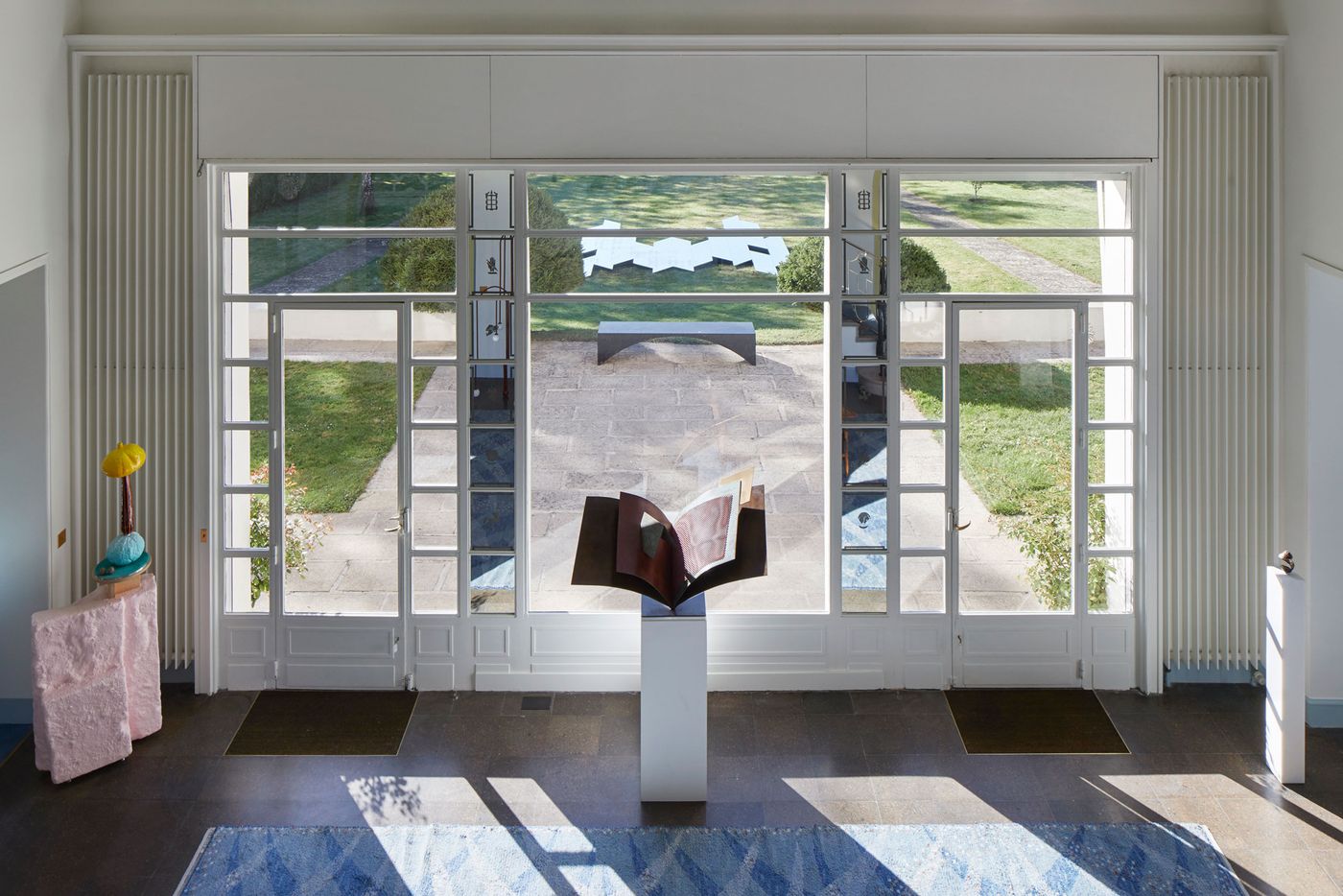
Left to right: "Kaaawa Lawn" by Jonathan Trayte; "Amoeba" by Camille Henrot; "CitrusQuantum" by Alicja Kwade. Photography © Jeremie Léon.
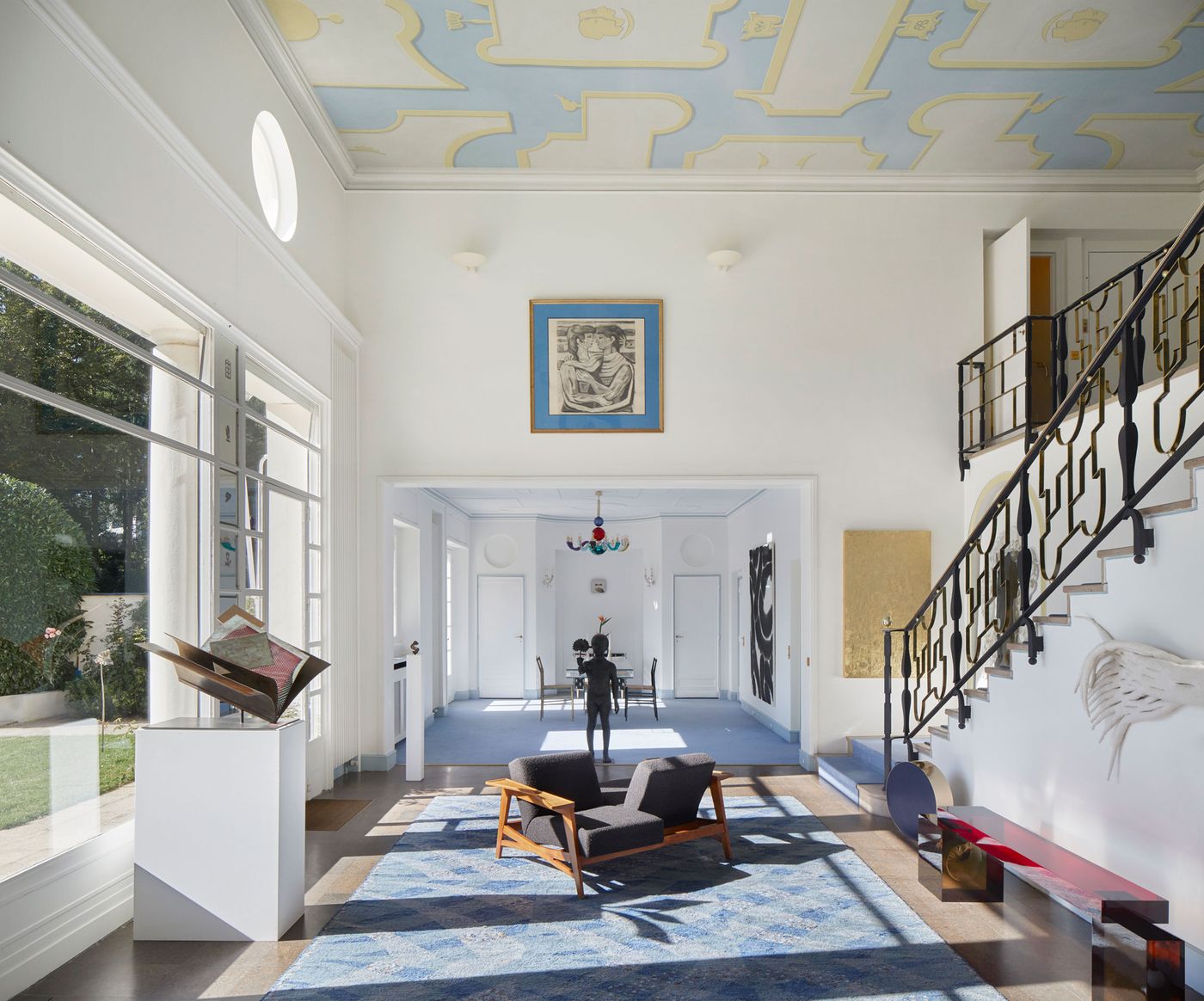
Photography © Jeremie Léon.
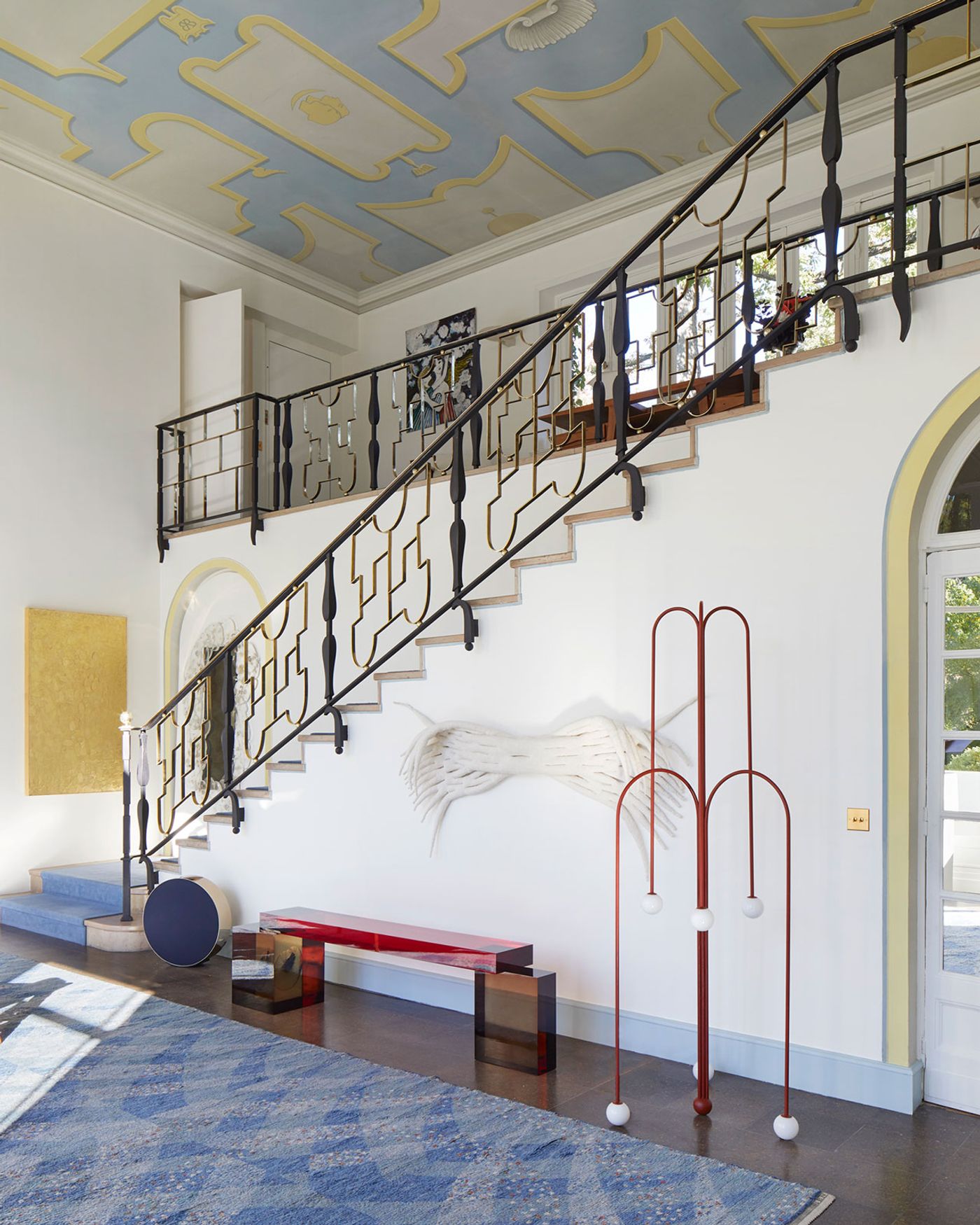
"Colour Lenses Bench" by Studio Nucleo; "Angelo" textile scylpture by Agnès Sébyleau, commissioned for Genius Loci at L'Ange Volant; "Crossette" floor lamp by Michael Anastassiades. Photography © Jeremie Léon.
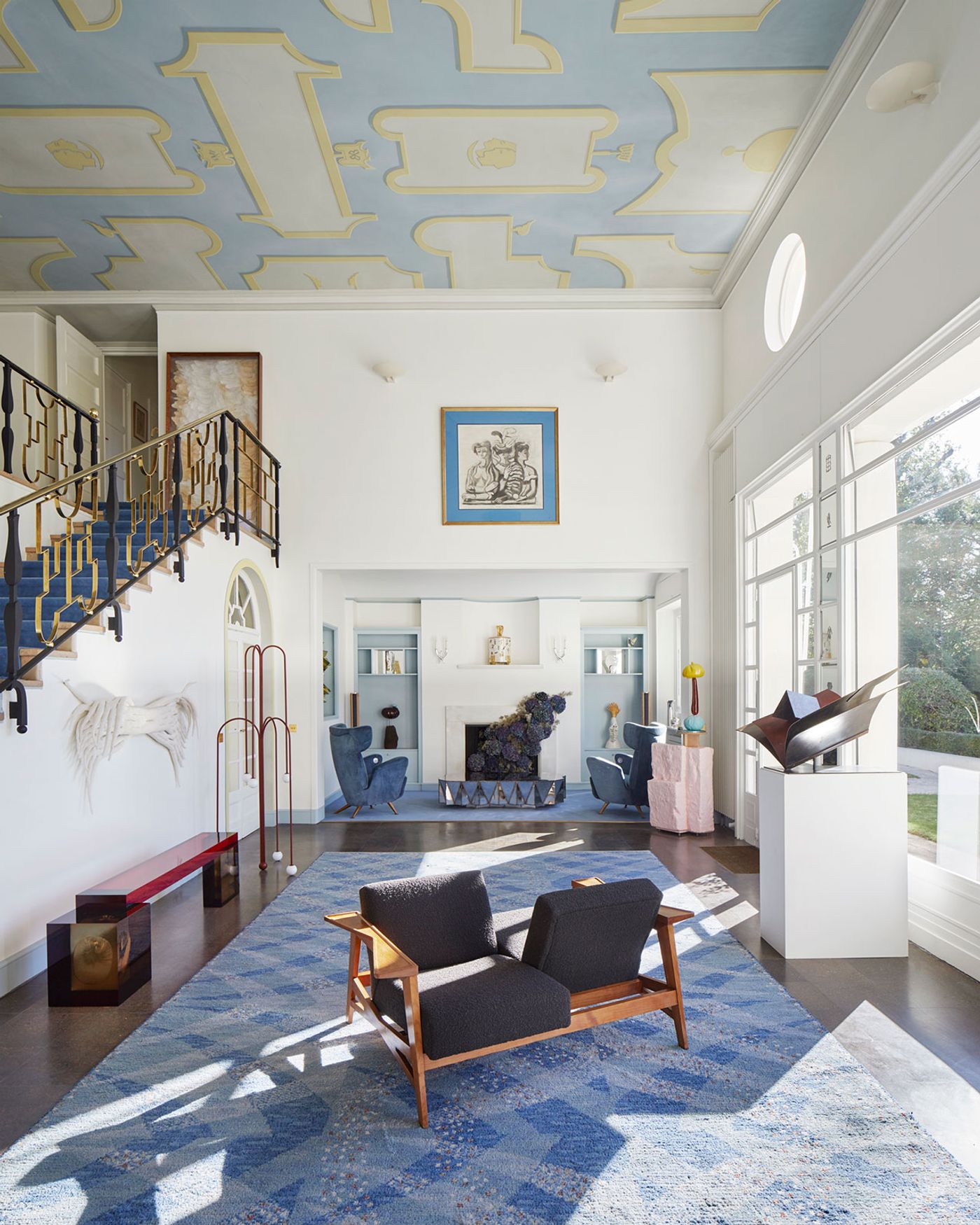
Tête-à-tête sofa by BBPR Studio, 1947. Photography © Jeremie Léon.
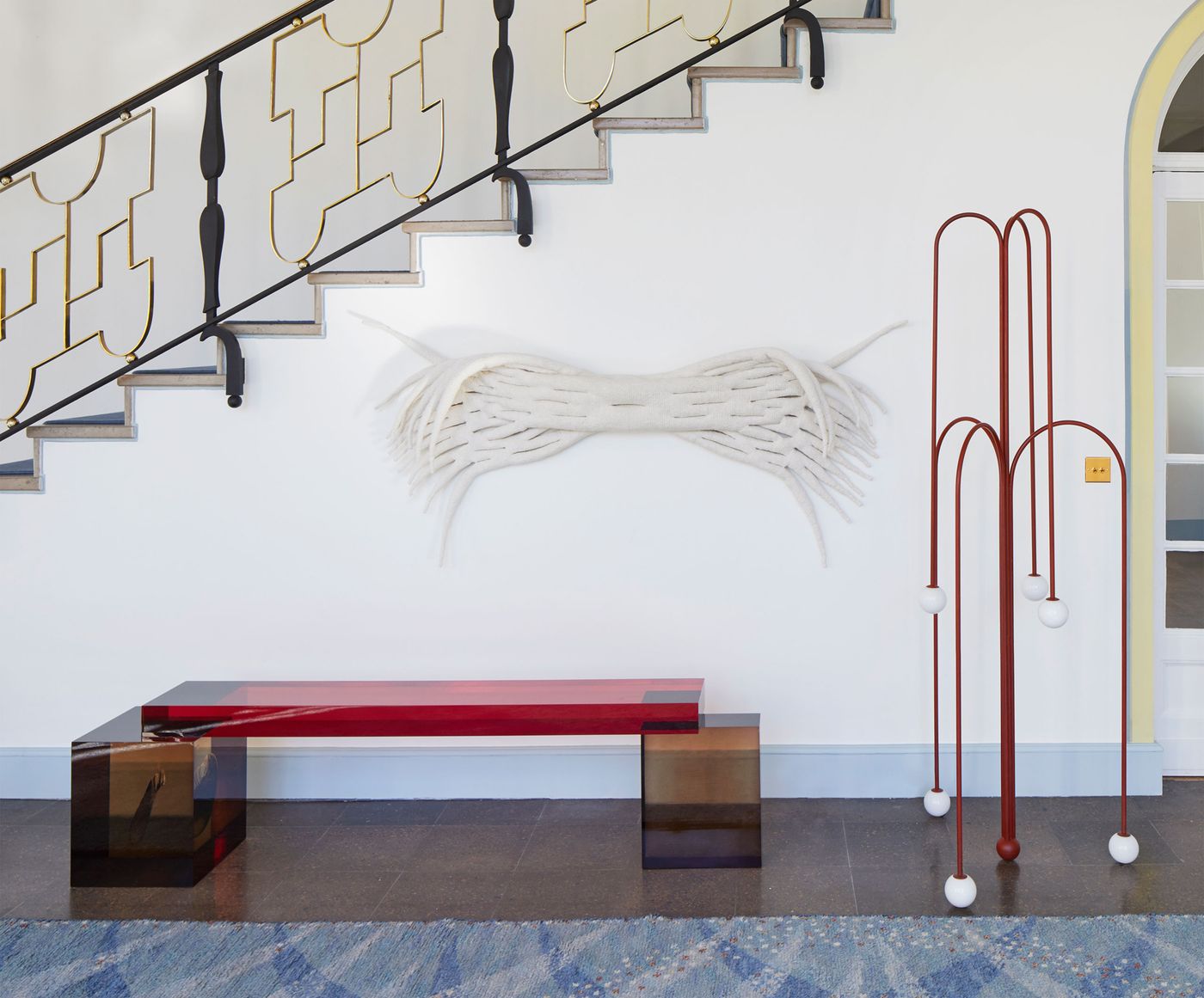
"Colour Lenses Bench" by Studio Nucleo; "Angelo" textile scylpture by Agnès Sébyleau, commissioned for Genius Loci at L'Ange Volant; "Crossette" floor lamp by Michael Anastassiades. Photography © Jeremie Léon.
Meticulously restored in 2019, the villa’s spirit came alive during the exhibition’s duration through an eclectic art and design collection that was both inspired by and drew attention to Ponti’s major inspirational themes. Bringing together emerging talents and established practitioners, the multidisciplinary collection included works spanning paintings, sculpture, and installations, through to furniture, fashion and ceramics, to a sound installation by composer Jérôme Echenoz, and a bespoke scent by perfumer Barnabé Fillion.
At the entrance courtyard, a floating halo by Architect Franklin Azzi titled “Le Saint” welcomed visitors by evocatively referencing the spirituality of the place and its creator, as did artist Mathias Kiss’ monumental mirror installation “Sans 90 degrés Sky Mirror” in the back garden, spread out on the lawn in the form of an angel’s wings paying homage to the villa’s name – both pieces especially commissioned for Genius Loci.
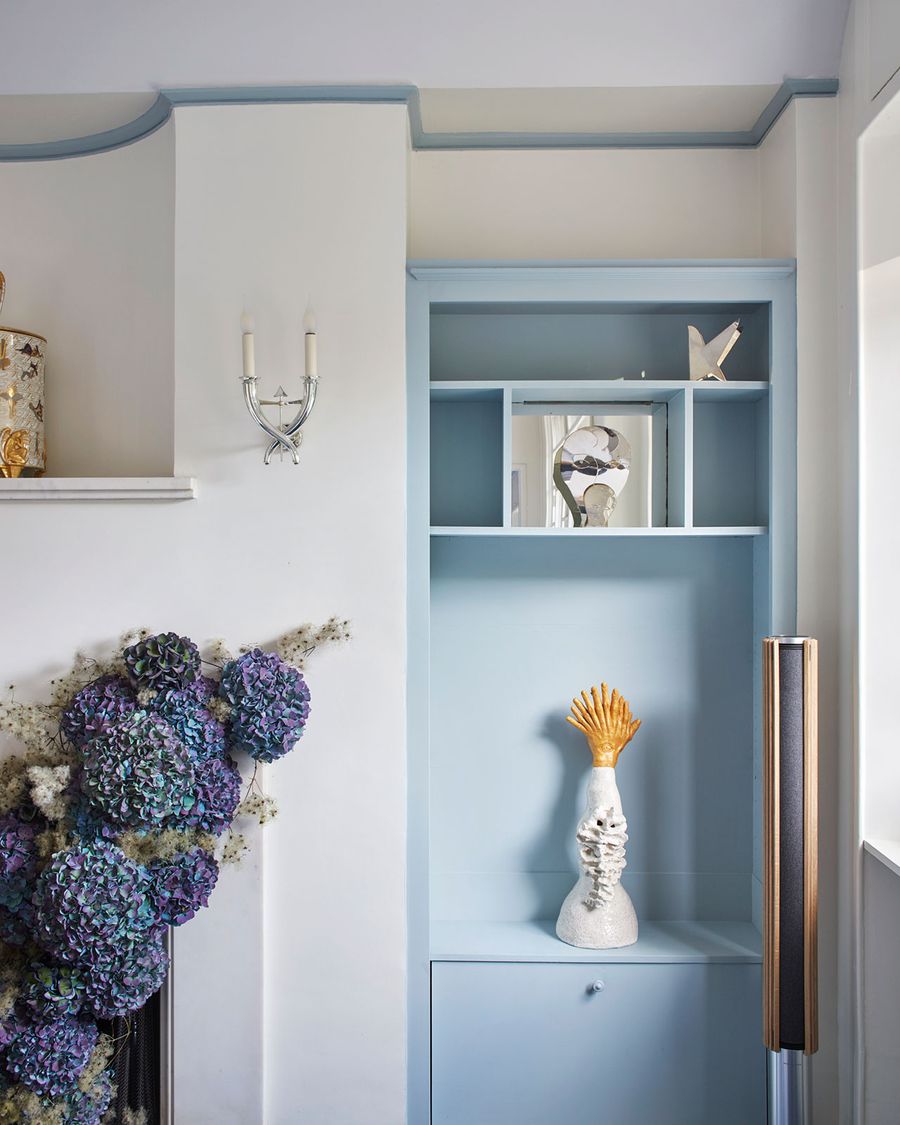
Floral installation by Louis-Géraud Castor; Silver sculpture by Christofle. Ceramic sculpture by Maloles Antignac; Bang & Olufsen speaker. Photography © Jeremie Léon.
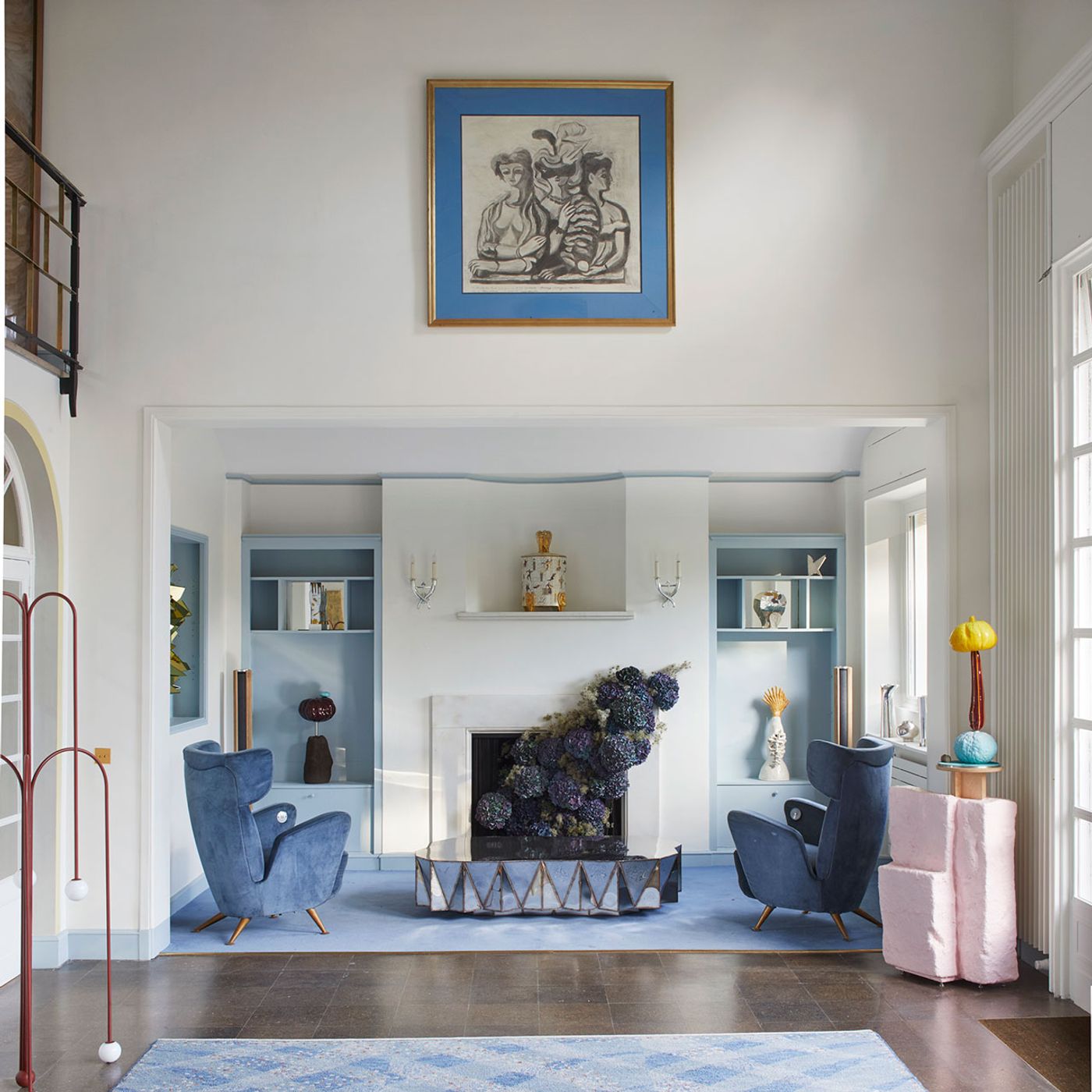
Photography © Jeremie Léon.

Floral installation by Louis-Géraud Castor; Silver sculpture by Christofle. Ceramic sculpture by Maloles Antignac; Bang & Olufsen speaker. Photography © Jeremie Léon.

Left to right: "Kaaawa Lawn" by Jonathan Trayte; "Amoeba" by Camille Henrot; "CitrusQuantum" by Alicja Kwade. Photography © Jeremie Léon.
Overlooking the back garden, the double-height drawing room is a bright and airy space that encapsulates the villa’s major themes of levity, transparency and colour. Generously illuminated through large windows and clerestory portholes, the space is subtly animated by the wide garden views as much as by the light blue, white and yellow painted ceiling, which Ponti created to commemorate Tony Bouilhet and Carla Borlett’s nuptials.
At the centre of the space, a 1947 tête-à-tête sofa created by mid-century architectural and design studio BBPR guided the eye to the dining room on the one side and the “fireplace corner” on the other, which during the exhibition conversed with the cubic forms of Studio Nucleo’s transparent resin bench, the fountain-like curves of Michael Anastassiades’ “Crossette” floor lamp, and the crocheted tentacles of textile sculptor Agnès Sébyleau’s “Angelo”, which was created for the exhibition as a reference to the villa’s titular spirit. Prominently displayed besides the window, the open book-shaped plastic and bronze “Amoeba” sculpture by French artist Camille Henrot alluded to the importance of books and culture in Ponti’s professional and personal life, while French artist Laurent Grasso’s bronze child figure holding a flower in front of the dining room, conceivably “plucked” from the artist's “Future Herbarium” installation in the garden. Additional sculptures by English artist Jonathan Trayte and Spanish artist Maloles Antignac injected the space with some playfulness thanks to their whimsical forms and candy colours.
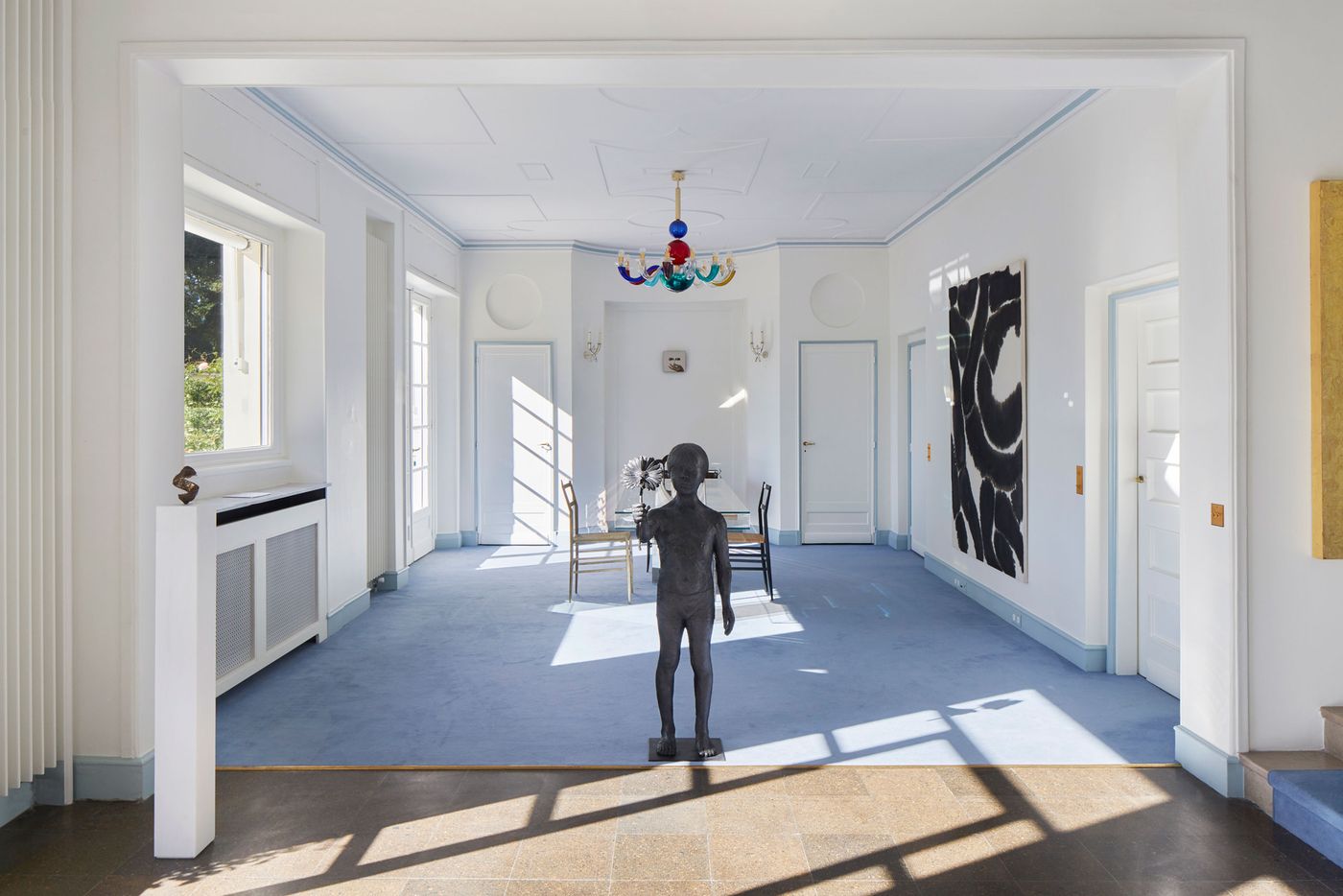
Bronze sculpture of child holding a flower by Laurent Grasso. Photography © Jeremie Léon.
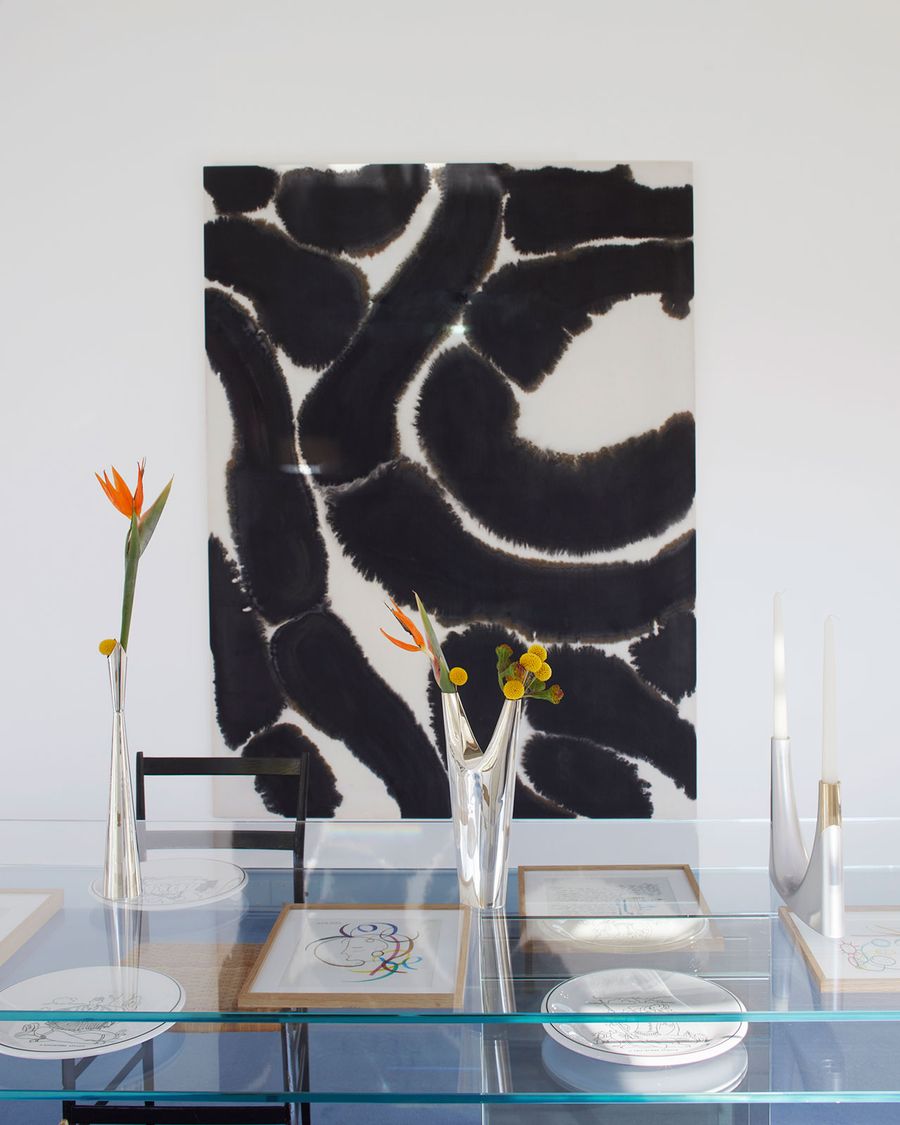
Painting by Latifa Echakhch. Photography © Jeremie Léon.

Glass dining table by Studio KO; "Superpesante" bronze chair by Marion Mailaender inspired by Gio Ponti's Superleggera 669 chair; candle-holder by Damian O’Sullivan commissioned by Genius Loci. Photography © Jeremie Léon.
Ponti’s obsession with transparency was reflected in the large glass table designed by Paris and Marrakesh-based Studio KO in the dining room, while across the hall, the mirrored wall-mounted sculpture "Sans 90 degrés" by Mathias Kiss, and the shimmering, crystalline-like welded steel table by English artist Julian Mayor echoed his passion for minerals, with a pair of blue velvet first class train carriage armchairs designed by Ponti in 1950 conveying the Italian master’s unique modernist aesthetic.With 15 additional artists and designers showcasing their work across the ground floor and outdoor areas, the exhibition not only succeeded in conjuring the villa’s timeless spirit but also prompted an evocative dialogue between both past and present.
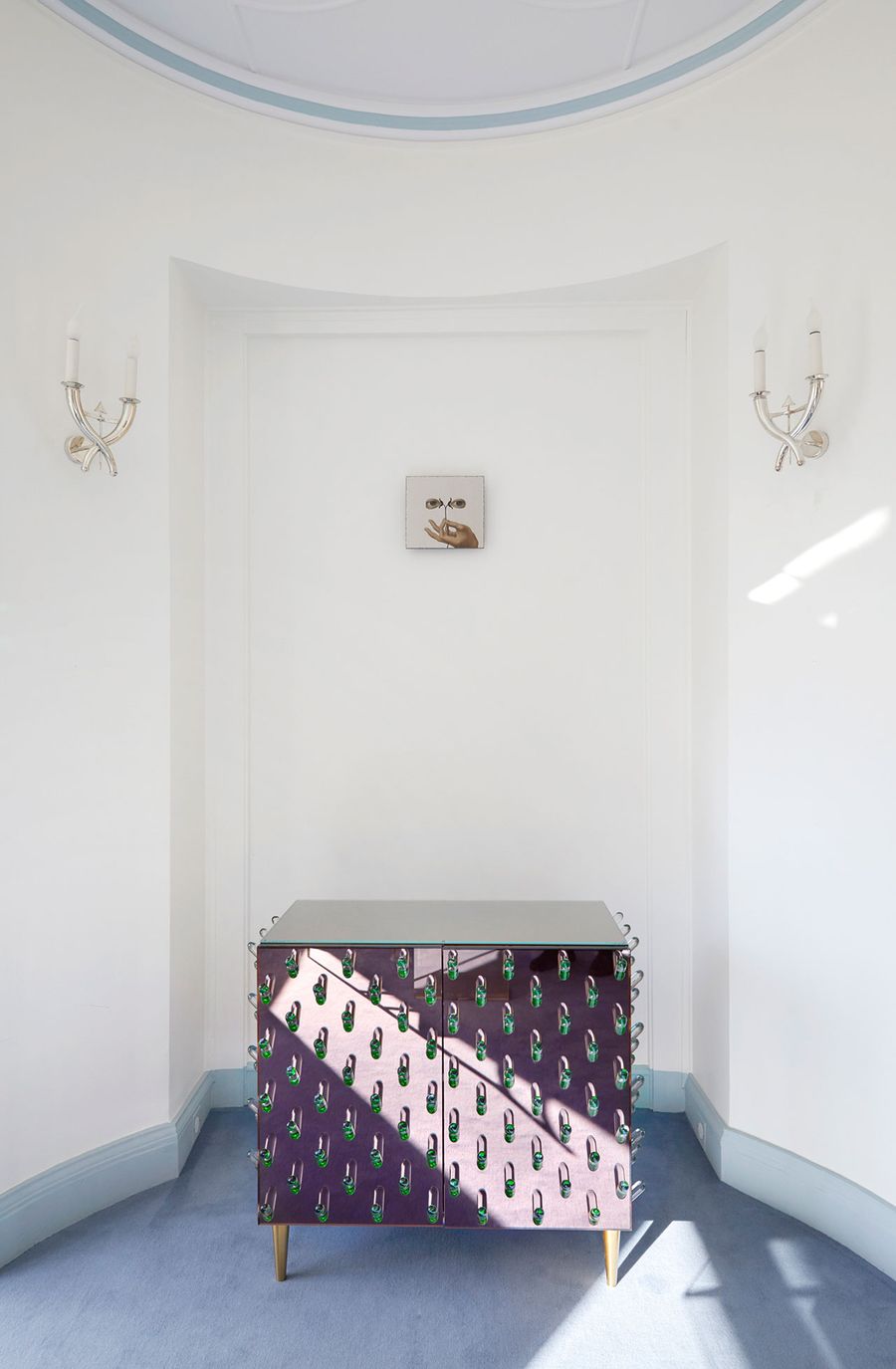
"Studies into the Past" oil on wood painting by Laurent Grasso; Mirrored cabinet by Roberto Giulio Rida. Photography © Jeremie Léon.
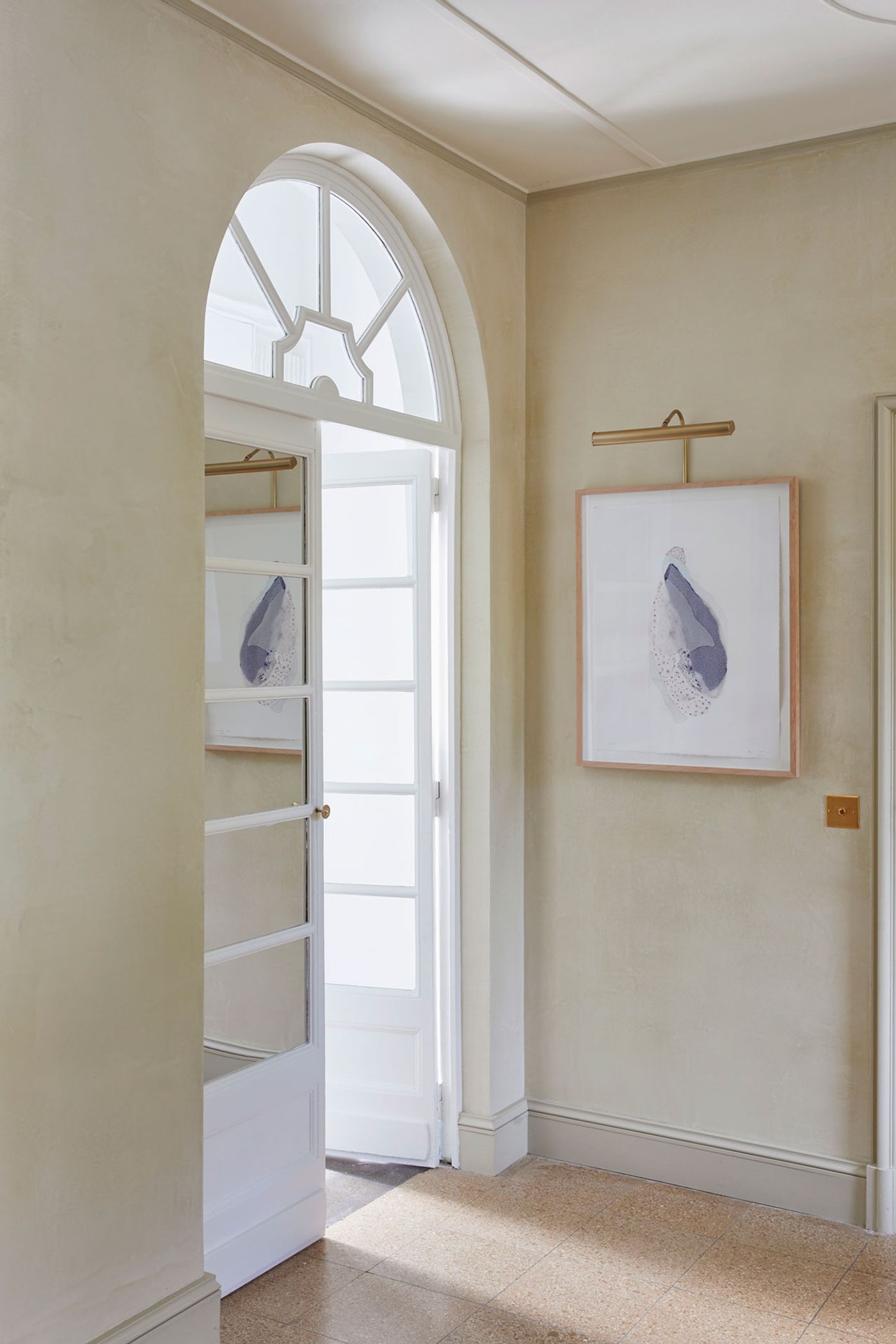
"Nucleus" by Alix Waline & Sabatina Leccia. Photography © Jeremie Léon.
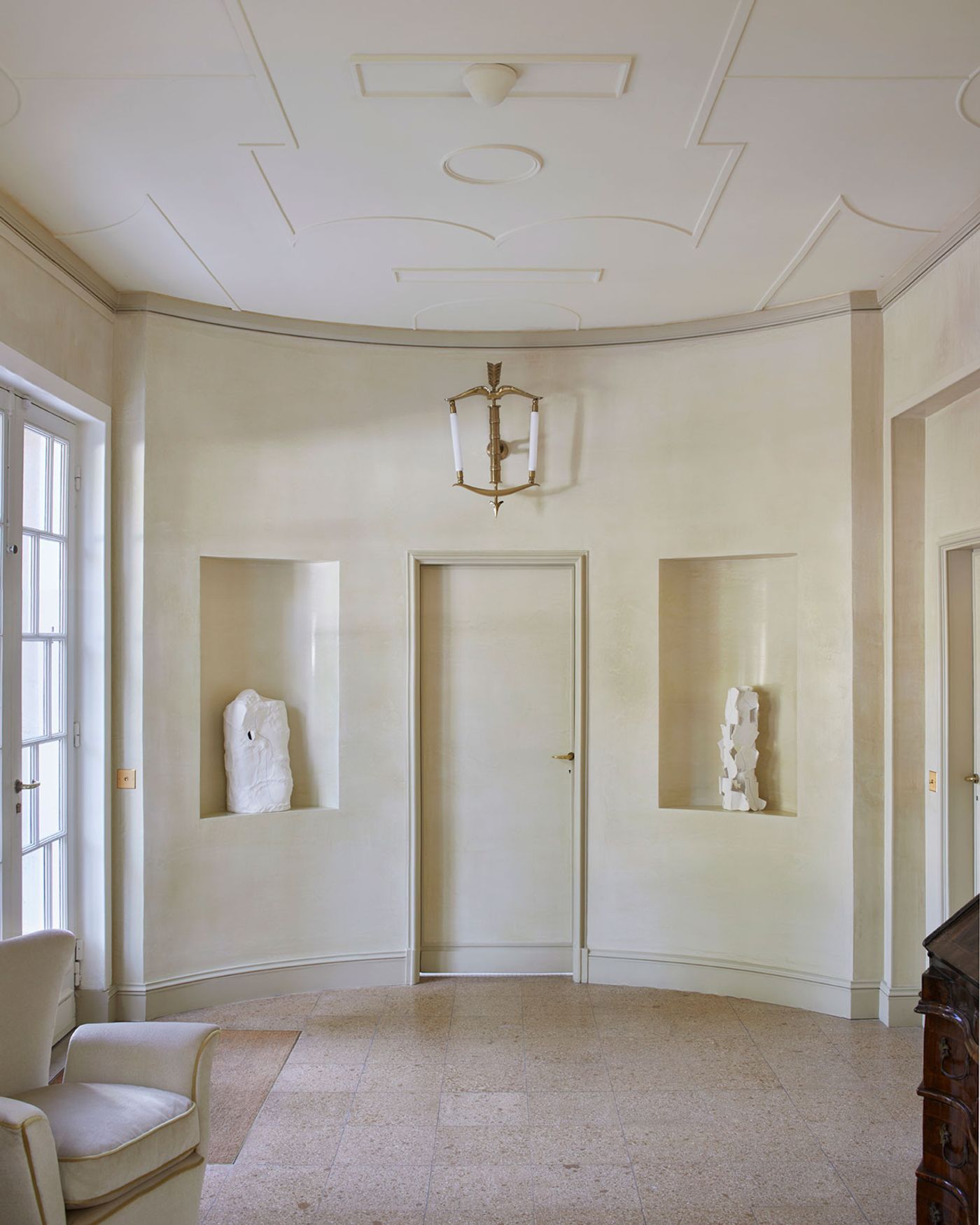
"Broker" and "Gaze" by Nao Matsunaga. Photography © Jeremie Léon.
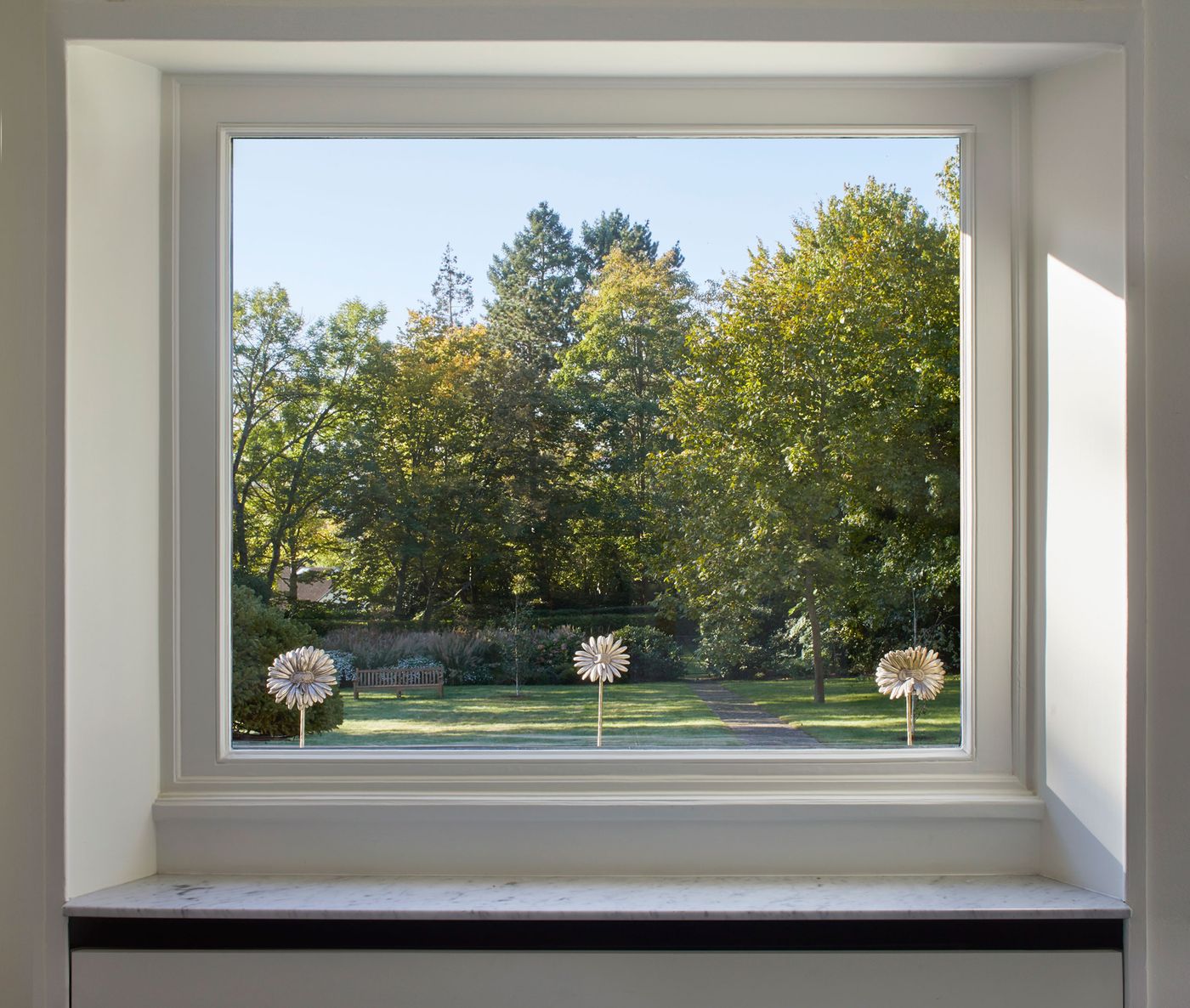
"Future Herbarium" by Laurent Grasso. Photography © Jeremie Léon.

"Future Herbarium" by Laurent Grasso. Photography © Jeremie Léon.

"Le Saint" light installation by Franklin Azzi commissioned for Genius Loci at L'Ange Volant.© Le Saint, Franklin Azzi, 2021. Photography Jeremie Léon.

"Le Saint" light installation by Franklin Azzi commissioned for Genius Loci at L'Ange Volant.© Le Saint, Franklin Azzi, 2021. Photography Stéphane Aboudaram | We Are Content(S)

"Le Saint" light installation by Franklin Azzi commissioned for Genius Loci at L'Ange Volant.© Le Saint, Franklin Azzi, 2021. Photography Stéphane Aboudaram | We Are Content(S)
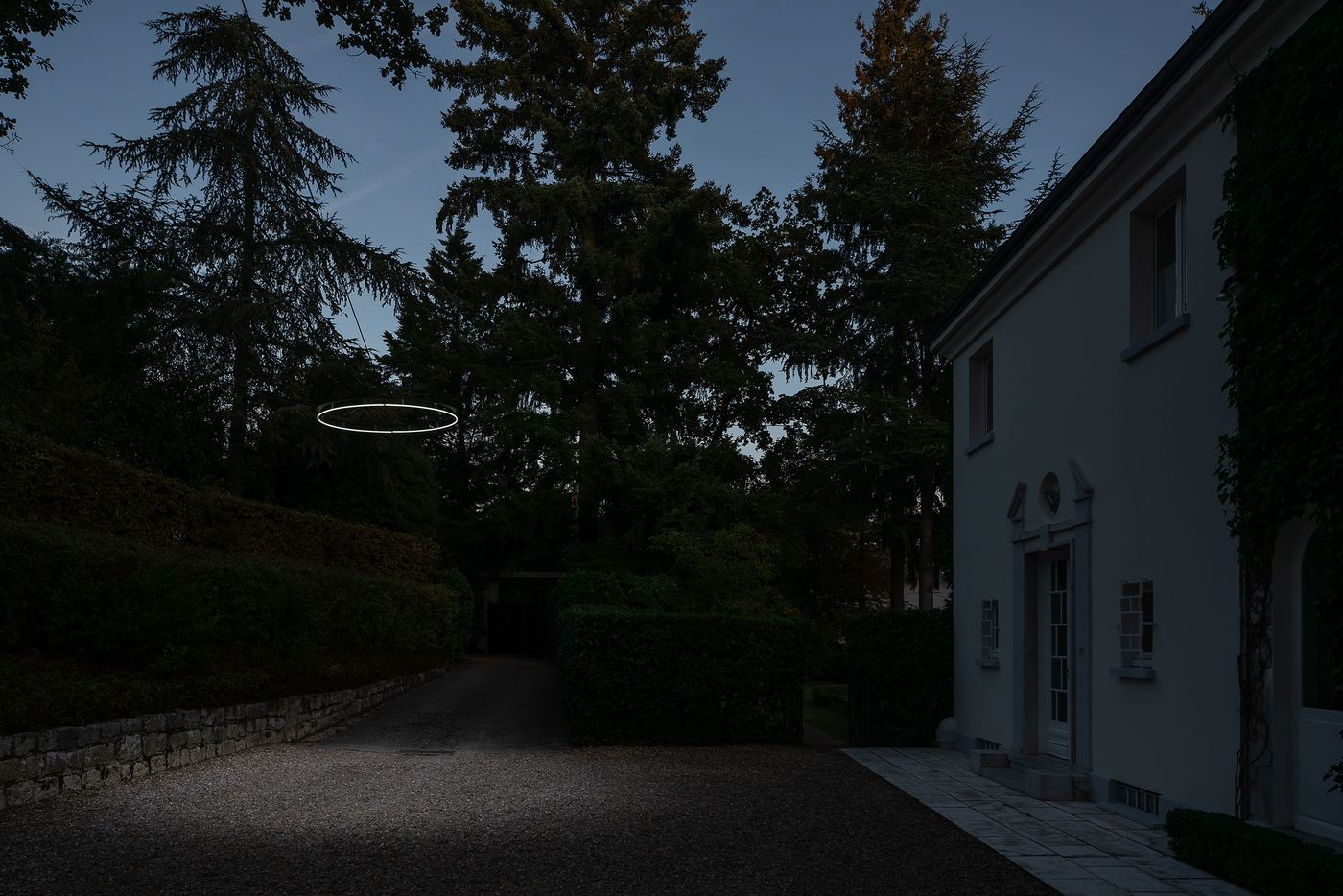
"Le Saint" light installation by Franklin Azzi commissioned for Genius Loci at L'Ange Volant. © Le Saint, Franklin Azzi, 2021. Photography Stéphane Aboudaram | We Are Content(S)